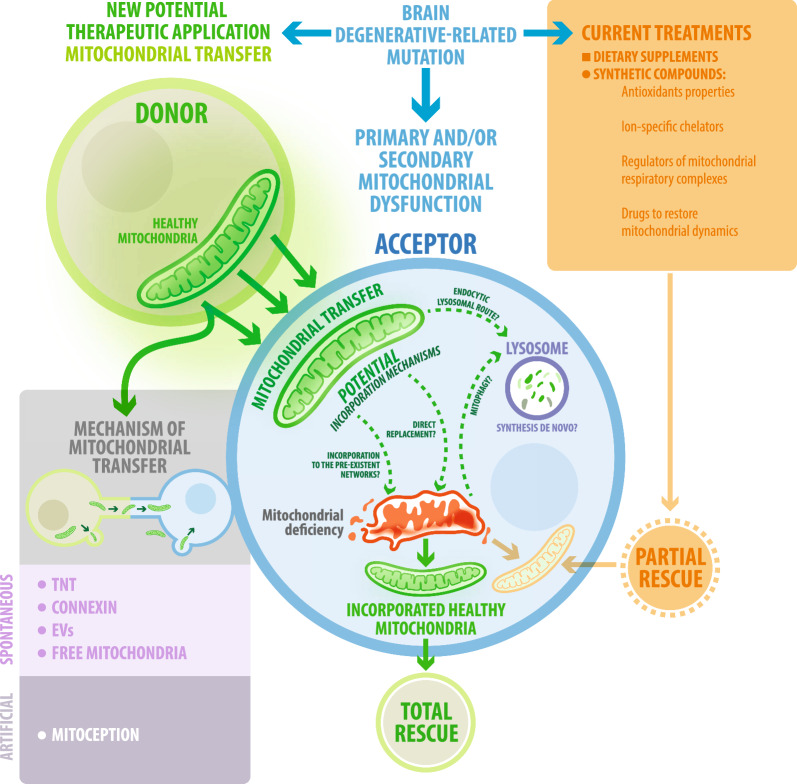Fig. 3.
Mitochondrial transfer as a new therapeutic strategy to treat neurodegenerative diseases. Therapies that target mitochondria have emerged as a promising strategy for reducing oxidative stress and restoring mitochondrial function. However, limitations in specificity and drug delivery have hindered the success of these current treatments. Therefore, novel therapeutic approaches are critically needed. One of these is mitochondrial transfer. Mitochondria can be transferred from one cell to another; this process involves spontaneous deliveries such as tunneling nanotubes (TNT), extracellular vesicles (EVs), gap junctions, but also artificially through mitoception. All of these mechanisms allow the transfer of intact and functional mitochondria, increasing the mtDNA content of the acceptor cells and thus restoring their capacity for respiration and survival. In the neurodegenerative disease’s context, artificial and/or spontaneous mitochondrial transfer might induce a total rescue of neurodegenerative acceptor cells through several unknown mechanisms that are still under investigation

